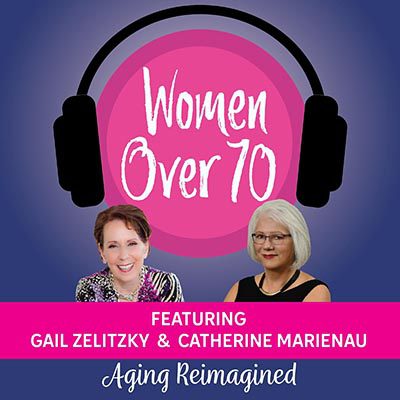Halloween and the Celts
n
n
I already wrote about my strange obsession with the Celts, a European Bronze Age and Iron Age people u00a0dominant between 700 BCE and 77 CE. In 51 CE, Julius Caesar u201cpacifiedu201d Gaul. The first slaughter of druids on Anglesey (Mona) in Wales the home of the last druid u201ccollege,u201d came in 61 CE by Suetonius Paulinus. Then he got to feeling like Julius.. Paulinus chose to ignore the treaty with the Iceni that established right of succession for their u00a0lands. When Queen Boudicau2019s husband left the Iceni lands to her and her daughters, Paulinus seized her lands. When this u201cstroppy womanu201d objected he flogged publicly her and let his soldiers gang rape her daughters.
n
Boudica did not take such treatment well and led a revolt first slaughtering half the residents of Londinium only to be narrowly defeated later. Paulinus limped back to Rome and about fifteen years later Gnaeus Julius Agricola conquered Mona, after the Boudican revolt. u00a0The Celts were finally subjugated in Britain.
n
Celts might disagree, and there are six u201cnationsu201d still speaking Celtic languages, and no countries speaking Latin.u00a0 But Celtic dominance in Europe was over at this point.u00a0 Still seven hundred and fifty years ainu2019t a bad run, and influences persist today.
n
Many holidays we celebrate stem from Celtic Fire festivals, Christmas (Historians tell us that Jesus was likely born in the spring, but Christians celebrate his birth around the Solstice), Groundhog day, (Imbolc) celebration of lambing and mama-sheep lactation. May Day (Beltane) was first usurped by young women showing off moves around the maypole, now by the International Communist Party for Labor Day, (except in the US where we are allergic to red).
n
And let us not forget Halloween, the Celtic New Yearu2019s Eve, known as Samhain (a Gaelic word pronounced u201cSah-Winu201d). This wonu2019t be a revelation to any horror movie fans because this fact has been written into many scary flick scripts released around October 31
n
The Celts tracked the time of days from sundown to sundown. (Does Judaic tradition track time that way?) The Celtic year similarly ran from the dark to the light from November 1 to October 31.
n
The Celts were also genealogy obsessed. They evidently introduced themselves by giving their lineage. I am the son of______, who was the son of_____, etc. A tradition that survives with the prefix Mac, or Mc, of Scots and Irish names and the Ou2019 in Irish names like Ou2019Brien, Ou2019Connor, etc. (Is this parallel to the Bin or Ben in cultures in the Middle East?)
n
I know a little about ancestor obsession because my wife is an amateur genealogist. On gift giving holidays some relative, stuck for a gift, will give her a mug which says u201cI know where the nuts came fromu201d or a tee shirt that says u201cI seek Dead People.u201d
n
For Celts, though, the dead werenu2019t, you know, dead and gone, desiccated skeletons in barrow tombs; they were just in the u201cOther World.u201d On New Yearu2019s the walls between the worlds were thin. At a time, when you might be thinking about your plans for the next year, your dead family might show up with a lot of unsolicited advice. Further some of your dead friends might want you to come hang out with them and some of your dead enemies might show up to settle a score.
n
So if you were staying home, you decided to leave some food on the stoop to appease oru00a0 distract those uninvited guests. And if you had to be out and about on the start of Samhain you might wear a disguise to keep undesirables from recognizing you.
n
As happened with a lot of traditional pagan holidays, the new religion in town, Christianity, was smart. u201cWe donu2019t mind if the people celebrate. Letu2019s just reframe u201cwhatu201d they are celebrating.u201d So November 1 became u201cAll-Saintu2019s Dayu201d a time to rethink your future in the context of emulating the martyrs and All Hallows Eve became a time to dress-up to scare away the Devil who stayed up this night trying to distract you from a holy life.
n
The whole Carved Pumpkin thing is much later. In the eighteenth century an old Irish myth emerged about Stingy Jack who tricked the Devil several times including tricking him not to take his soul to hell. The devil kept his word, but when heaven wouldnu2019t take Jack, the devil set Jack wandering the earth with only a coal from hell placed in a carved turnip. The Irish and Scots brought the myth to America, where pumpkins were more plentiful and less edible and Jack ou2019 Lanterns were born.
n
I wonu2019t blame the Celts for Americanu2019s obsession with giving out candy to kids; thatu2019s probably the work of the American Dental Association, (just kidding dentists). And Celts may not be the only ancient people who contributed to this holiday and its bizarre celebration.u00a0 The Celts were a completely oral culture; they never wrote anything down so the accuracy of this may be suspect, but it all makes sense to me.
n
I will certainly dress-up (usually as a wizard) and hand out candy, but Iu2019ll also contemplate the coming year, my ancestors who came before me, and the thin space between life and death and my Celtic heritage.
n
I will also squirrel away a few of the Twix bars for myself, (shhh – donu2019t tell Billie!).u00a0u00a0u00a0
n
“,”tablet”:”
n
n
I already wrote about my strange obsession with the Celts, a European Bronze Age and Iron Age people dominant between 700 BCE and 77 CE. In 51 CE, Julius Caesar u201cpacifiedu201d Gaul. The first slaughter of druids on Anglesey (Mona) in Wales the home of the last druid u201ccollege,u201d came in 61 CE by Suetonius Paulinus. Then he got to feeling like Julius.. Paulinus chose to ignore the treaty with the Iceni that established right of succession for their lands. When Queen Boudicau2019s husband left the Iceni lands to her and her daughters, Paulinus seized her lands. When this u201cstroppy womanu201d objected he flogged publicly her and let his soldiers gang rape her daughters.
n
Boudica did not take such treatment well and led a revolt first slaughtering half the residents of Londinium only to be narrowly defeated later. Paulinus limped back to Rome and about fifteen years later Gnaeus Julius Agricola conquered Mona, after the Boudican revolt. The Celts were finally subjugated in Britain.
n
Celts might disagree, and there are six u201cnationsu201d still speaking Celtic languages, and no countries speaking Latin. But Celtic dominance in Europe was over at this point. Still seven hundred and fifty years ainu2019t a bad run, and influences persist today.
n
Many holidays we celebrate stem from Celtic Fire festivals, Christmas (Historians tell us that Jesus was likely born in the spring, but Christians celebrate his birth around the Solstice), Groundhog day, (Imbolc) celebration of lambing and mama-sheep lactation. May Day (Beltane) was first usurped by young women showing off moves around the maypole, now by the International Communist Party for Labor Day, (except in the US where we are allergic to red).
n
And let us not forget Halloween, the Celtic New Yearu2019s Eve, known as Samhain (a Gaelic word pronounced u201cSah-Winu201d). This wonu2019t be a revelation to any horror movie fans because this fact has been written into many scary flick scripts released around October 31
n
The Celts tracked the time of days from sundown to sundown. (Does Judaic tradition track time that way?) The Celtic year similarly ran from the dark to the light from November 1 to October 31.
n
The Celts were also genealogy obsessed. They evidently introduced themselves by giving their lineage. I am the son of______, who was the son of_____, etc. A tradition that survives with the prefix Mac, or Mc, of Scots and Irish names and the Ou2019 in Irish names like Ou2019Brien, Ou2019Connor, etc. (Is this parallel to the Bin or Ben in cultures in the Middle East?)
n
I know a little about ancestor obsession because my wife is an amateur genealogist. On gift giving holidays some relative, stuck for a gift, will give her a mug which says u201cI know where the nuts came fromu201d or a tee shirt that says u201cI seek Dead People.u201d
n
For Celts, though, the dead werenu2019t, you know, dead and gone, desiccated skeletons in barrow tombs; they were just in the u201cOther World.u201d On New Yearu2019s the walls between the worlds were thin. At a time, when you might be thinking about your plans for the next year, your dead family might show up with a lot of unsolicited advice. Further some of your dead friends might want you to come hang out with them and some of your dead enemies might show up to settle a score.
n
So if you were staying home, you decided to leave some food on the stoop to appease or distract those uninvited guests. And if you had to be out and about on the start of Samhain you might wear a disguise to keep undesirables from recognizing you.
n
As happened with a lot of traditional pagan holidays, the new religion in town, Christianity, was smart. u201cWe donu2019t mind if the people celebrate. Letu2019s just reframe u201cwhatu201d they are celebrating.u201d So November 1 became u201cAll-Saintu2019s Dayu201d a time to rethink your future in the context of emulating the martyrs and All Hallows Eve became a time to dress-up to scare away the Devil who stayed up this night trying to distract you from a holy life.
n
The whole Carved Pumpkin thing is much later. In the eighteenth century an old Irish myth emerged about Stingy Jack who tricked the Devil several times including tricking him not to take his soul to hell. The devil kept his word, but when heaven wouldnu2019t take Jack, the devil set Jack wandering the earth with only a coal from hell placed in a carved turnip. The Irish and Scots brought the myth to America, where pumpkins were more plentiful and less edible and Jack ou2019 Lanterns were born.
n
I wonu2019t blame the Celts for Americanu2019s obsession with giving out candy to kids; thatu2019s probably the work of the American Dental Association, (just kidding dentists). And Celts may not be the only ancient people who contributed to this holiday and its bizarre celebration. The Celts were a completely oral culture; they never wrote anything down so the accuracy of this may be suspect, but it all makes sense to me.
n
I will certainly dress-up (usually as a wizard) and hand out candy, but Iu2019ll also contemplate the coming year, my ancestors who came before me, and the thin space between life and death and my Celtic heritage.
n
I will also squirrel away a few of the Twix bars for myself, (shhh – donu2019t tell Billie!).
n
“}},”slug”:”et_pb_text”}” data-et-multi-view-load-tablet-hidden=”true”>
I already wrote about my strange obsession with the Celts, a European Bronze Age and Iron Age people dominant between 700 BCE and 77 CE. In 51 CE, Julius Caesar “pacified” Gaul. The first slaughter of druids on Anglesey (Mona) in Wales the home of the last druid “college,” came in 61 CE by Suetonius Paulinus. Then he got to feeling like Julius.. Paulinus chose to ignore the treaty with the Iceni that established right of succession for their lands. When Queen Boudica’s husband left the Iceni lands to her and her daughters, Paulinus seized her lands. When this “stroppy woman” objected he flogged publicly her and let his soldiers gang rape her daughters.
Boudica did not take such treatment well and led a revolt first slaughtering half the residents of Londinium only to be narrowly defeated later. Paulinus limped back to Rome and about fifteen years later Gnaeus Julius Agricola conquered Mona, after the Boudican revolt. The Celts were finally subjugated in Britain.
Celts might disagree, and there are six “nations” still speaking Celtic languages, and no countries speaking Latin. But Celtic dominance in Europe was over at this point. Still seven hundred and fifty years ain’t a bad run, and influences persist today.
Many holidays we celebrate stem from Celtic Fire festivals, Christmas (Historians tell us that Jesus was likely born in the spring, but Christians celebrate his birth around the Solstice), Groundhog day, (Imbolc) celebration of lambing and mama-sheep lactation. May Day (Beltane) was first usurped by young women showing off moves around the maypole, now by the International Communist Party for Labor Day, (except in the US where we are allergic to red).
And let us not forget Halloween, the Celtic New Year’s Eve, known as Samhain (a Gaelic word pronounced “Sah-Win”). This won’t be a revelation to any horror movie fans because this fact has been written into many scary flick scripts released around October 31
The Celts tracked the time of days from sundown to sundown. (Does Judaic tradition track time that way?) The Celtic year similarly ran from the dark to the light from November 1 to October 31.
The Celts were also genealogy obsessed. They evidently introduced themselves by giving their lineage. I am the son of______, who was the son of_____, etc. A tradition that survives with the prefix Mac, or Mc, of Scots and Irish names and the O’ in Irish names like O’Brien, O’Connor, etc. (Is this parallel to the Bin or Ben in cultures in the Middle East?)
I know a little about ancestor obsession because my wife is an amateur genealogist. On gift giving holidays some relative, stuck for a gift, will give her a mug which says “I know where the nuts came from” or a tee shirt that says “I seek Dead People.”
For Celts, though, the dead weren’t, you know, dead and gone, desiccated skeletons in barrow tombs; they were just in the “Other World.” On New Year’s the walls between the worlds were thin. At a time, when you might be thinking about your plans for the next year, your dead family might show up with a lot of unsolicited advice. Further some of your dead friends might want you to come hang out with them and some of your dead enemies might show up to settle a score.
So if you were staying home, you decided to leave some food on the stoop to appease or distract those uninvited guests. And if you had to be out and about on the start of Samhain you might wear a disguise to keep undesirables from recognizing you.
As happened with a lot of traditional pagan holidays, the new religion in town, Christianity, was smart. “We don’t mind if the people celebrate. Let’s just reframe “what” they are celebrating.” So November 1 became “All-Saint’s Day” a time to rethink your future in the context of emulating the martyrs and All Hallows Eve became a time to dress-up to scare away the Devil who stayed up this night trying to distract you from a holy life.
The whole Carved Pumpkin thing is much later. In the eighteenth century an old Irish myth emerged about Stingy Jack who tricked the Devil several times including tricking him not to take his soul to hell. The devil kept his word, but when heaven wouldn’t take Jack, the devil set Jack wandering the earth with only a coal from hell placed in a carved turnip. The Irish and Scots brought the myth to America, where pumpkins were more plentiful and less edible and Jack o’ Lanterns were born.
I won’t blame the Celts for American’s obsession with giving out candy to kids; that’s probably the work of the American Dental Association, (just kidding dentists). And Celts may not be the only ancient people who contributed to this holiday and its bizarre celebration. The Celts were a completely oral culture; they never wrote anything down so the accuracy of this may be suspect, but it all makes sense to me.
I will certainly dress-up (usually as a wizard) and hand out candy, but I’ll also contemplate the coming year, my ancestors who came before me, and the thin space between life and death and my Celtic heritage.
I will also squirrel away a few of the Twix bars for myself, (shhh – don’t tell Billie!).
The post Halloween and the Celts appeared first on Wisdom from Unusual Places.
Originally Published on https://wisdomfromunusualplaces.com/blog/

























